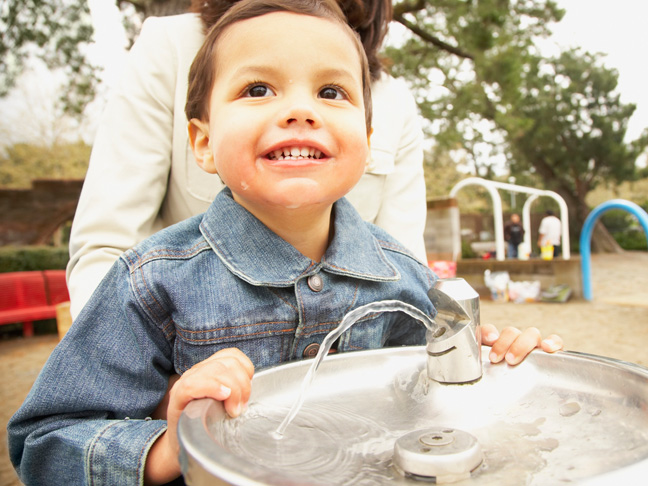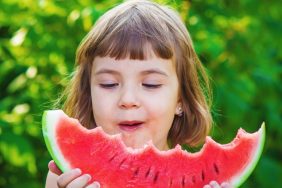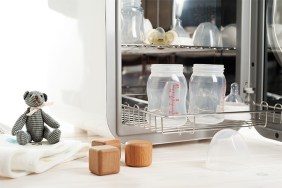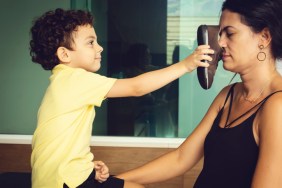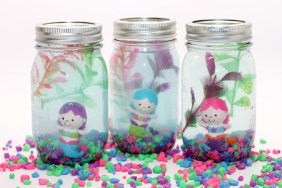I don’t know what it was like in your city this past winter, but in Los Angeles where I live, colds and flu and fevers and stomach bugs and pink eye were running rampant, taking out kids and grownups alike. I’m just now getting over a nasty throat infection that had me sicker than I’ve been in years. At a certain point, we start to feel powerless to all the germiest places kids encounter, but the truth is, we’re not. “The bottom line is that the world is full of germs and you can’t live in fear, but you can keep things clean and wash your hands,” says Deena Blanchard, MD, a pediatrician in private practice in New York City. It also helps to know where the yuckiest stuff lurks. Here are some of the biggest hot spots, and how you can protect your kids (and yourself) against the bacteria.
1. The Park & the Indoor Playground
With so many kids all running around in one contained area, putting their grubby hands all over their faces, and then all over the equipment, it’s no surprise that play areas are among the germiest places around. Obviously, you’re not going to avoid these fun excursions, but after playtime have your kids lather their hands with soap for at least 30 seconds, and then rinse with warm water, suggests Blanchard. “You can teach them to wash with soap and water while singing a common song like the ABCs or Happy Birthday to make sure they really take their time.” And really get in there, including under their fingernails where a lot of the crud hides.
2. The Bathroom at School
WebMD reports that most kids don’t use soap and water after using the toilet, which means they’re just walking out of the restroom with potentially dangerous fecal bacteria on their mitts. Um, yuck! Obviously, encourage your kids to wash their own hands, but you may also suggest they use a portable hand sanitizer after they get back to their desk. They’re bound to comply with one or the other! While many schools have sanitizers in the classroom, it’s smart to have kids over age 6 carry their own, preferably one that’s at least 60 percent alcohol, in order to be effective.
3. The Kitchen Sink at Home
Sure, it’s smart to have the kids do the dishes, but be sure they wash the heck out of their hands afterwards. One study found that the kitchen sink contains 1,000 times more bacteria than a toilet. Part of the reason is that we’re much more diligent about disinfecting our toilets than we are the kitchen sink. Also, the sink ends up loaded with dangerous food-borne bacteria like E. coli and salmonella, spread from raw meats and vegetables on cutting boards. Be sure to disinfect the sink regularly and toss over-used sponges.
4. The Water Fountain (*Anywhere)
Ever watched a kid put their mouth directly on the spout of a public drinking fountain? Yeah, it makes you want to cringe cause you just know it’s loaded with germs. Studies have found that drinking fountains, particularly at elementary schools, are full of rotavirus, norovirus, and influenza. Your best protection is to give your kid her own water bottle to bring to school. If it’s not allowed though, instruct her to keep her mouth off of the spigot, to let the water run for five seconds before taking a sip, and also to wash her hands afterwards, says Joseph Mercola, DO, a natural medicine specialist. (Easier said than done, but it’s worth a shot!)
5. The Carseat
Just look at the Goldfish crackers spilling out of the crevices, and it’s pretty obvious that your kid’s carseat is absolutely disgusting. One study in the UK found that a child’s safety seat contains twice as many harmful bacteria as a toilet. So be sure to sanitize their hands as soon as they get in (and out of) the car to prevent the ick from getting them sick. Meanwhile, Becky Rapinchuk of Clean Mama recommends that, twice a year, you completely remove the covers, wash them in cold water, and allow 12-24 hours for them to air dry. She also suggests occasionally (like once a month, or after a car wash) using Seventh Generation antibacterial wipes to clean off plastic or metal pieces on the seat.
6. Wherever Their Shoes Are
One quick and easy way to reduce the amount of germs in your home is to have everyone take off their shoes as soon as they come into the house (and then, yes, wash their hands afterwards). “As a pediatrician and a mom I always make sure that shoes come off before entering the house,” says Dr. Blanchard. “Yours and your child’s shoes are full of bacteria but also things like pesticides, heavy metals, gasoline, and allergens. By taking off your shoes not only are you getting the benefit of not tracking bacteria around the house but you are limiting your kid’s contact with other dangerous chemicals.”
7. The Bathroom at Home (*Especially When They Use Hand Towels)
The bathroom is generally just an icky area, and not all kids are great about washing their hands. Still, it might not be the toilet you have to worry about as much as the hand towels. According to Kelly Reynolds, Ph.D., director of the Environment, Exposure Science and Risk Assessment Center at the University of Arizona’s College of Public Health, viruses (like the flu) thrive in moist environments, like a damp towel your kids just used to dry their clean hands. She recommends thoroughly drying the towels between use, and using a sanitizing cycle to wash them.
Still, as scary as this all seems, Dr. Blanchard points out that germs are not as fearsome as we may think. “There are some theories that exposure to germs is important to the development of the immune system, and that the overly clean nature of our society has contributed to the rise in allergies,” she says. “Who knows though? The point is that you can’t drive yourself mad. Be smart, but live your life.” And make sure your kids keep washing their hands!
More Stay Healthy Tips:
- The Real Deal on Pink Eye, from Symptoms to Treatments
- How to Get Rid of Head Lice (Yes, Even the Drug-Resistant Kind)
- All About Ear Infections, According to a Pediatrician & Mom
Photo: Getty
